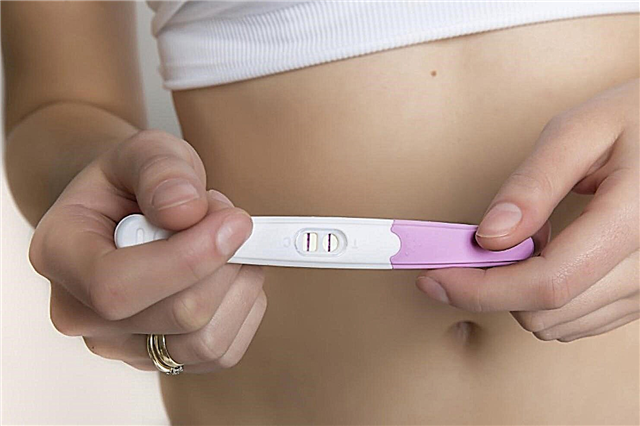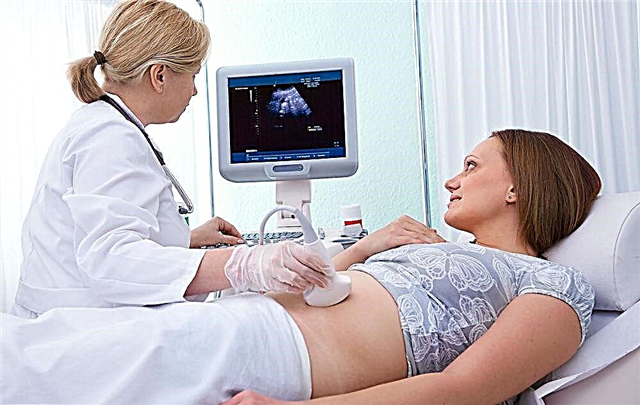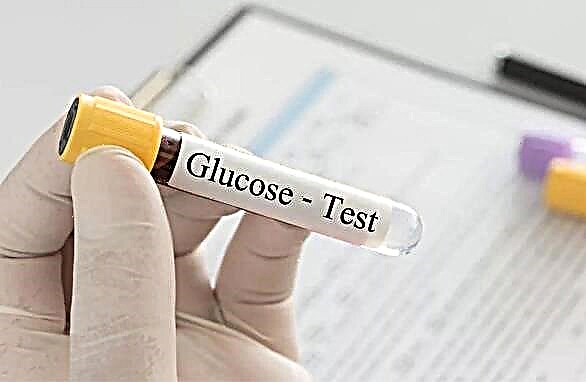
Childbirth at 36 weeks of gestation, that is, a month before the established obstetric term, raises many questions among women. The popular rumor that 8-month-old babies survive worse is fueling anxiety, and therefore women are very afraid to give birth at this time.
In this article, we will talk about what kind of childbirth at this time can actually be and what consequences they can entail.

The opinion of doctors
The last month of pregnancy is extremely important for the baby. Despite the fact that the baby is fully formed by 35-36 and 36-37 weeks of gestation, he needs these last weeks to gain the necessary weight, which will allow him to easily retain body heat after birth, as well as accumulate more surfactant. This is a special active substance that is necessary to ensure spontaneous breathing after birth. It is produced by the alveoli and accumulates in the lung tissue. It is this that prevents the alveolar bubbles from sticking together after the newborn takes the first breath.
The child is considered fully term and ready for independent life without intensive care for a period of 37 full obstetric weeks... Delivery will be considered urgent when it occurs between weeks 38 and 42.
It is most favorable for a woman and her child if the date of birth is as close as possible to the date indicated by the obstetricians when registering - the expected date of birth.

Thus, labor that begins at 36 weeks of gestation will be considered premature. This term is considered one of the most "popular" in the statistics of preterm birth. Up to 45% of all cases of early birth occur precisely between 34 and 37 weeks. But this fact should not cause strong fears.
The period of 36 obstetric weeks is quite solid and sufficient for the child's condition at birth to be neither critical nor severe, although it will be difficult to call it normal. The forecasts are quite favorable for both the mother and her child.

Why is this happening?
At 36 weeks, labor can spontaneously (independently) develop for a variety of reasons. In fairness, it should be noted that not in all cases it is generally possible to establish the causes of early birth. Most often, they are caused at 36 weeks of gestation by negatively influencing factors that are in direct connection with the state of the woman's health, with the characteristics of pregnancy and external influences.
Among female ailments that create increased risks of giving birth prematurely, one can note such as:
diseases of the kidneys and adrenal glands;
diabetes mellitus (including gestational diabetes);
inflammatory diseases of the reproductive system, abortions, miscarriages in history;
previous operations on the ovaries, the body of the uterus and the cervix;


metabolic disorders, especially the production of sex hormones and thyroid hormones;
ailments of the genitourinary system, genital infections, including "winged" infections (chlamydia, etc.);
weak cervix;
any chronic diseases of the internal organs of the mother;
a history of early birth.


The peculiarities of the current pregnancy, which can also affect the term of delivery, include:
polyhydramnios and low water;
large child;
systematic leakage of water in small quantities, as well as complete outpouring of water;
multiplicity;
low location of the placenta or its presentation.
External factors include severe stresses that a woman could be exposed to, hard physical labor, alcohol and drug use, smoking while carrying a child, a difficult financial situation, and a lack of adequate nutrition rich in vitamins.
Also, pre-term childbirth occurs more often in women under the age of 18 and in those over 37. Increase the likelihood, with the already existing negative factors, the presence of a male fetus, as well as congenital and genetic anomalies of its development.

According to indications
Childbirth at this time can be a vital necessity. There are situations in which doctors have to make an urgent decision - to prolong the pregnancy or deliver a woman as soon as possible in order to save her and the baby.
Try not to stimulate labor at 36 weeks... If there are grounds for delivery, a caesarean section will be more gentle and correct, because at 36 weeks the cervix, as a rule, is not ready for labor, and stimulation can lead to serious injuries to the mother and fetus. In addition, the very indications for which childbirth will be recommended right now are usually urgent, in which independent labor activity is undesirable and dangerous.
Childbirth (usually surgical) this week will be recommended for women who have a sudden flare-up of chronic severe illnesses and their course threatens the fetus and the life of the mother. Acute renal failure, hepatic failure, severe gestosis with pressure that does not decrease under the influence of medications - this is just a small list of reasons for urgent delivery.

To save the life of the fetus, the operation at this time is carried out in the presence of a serious and severe Rh-conflict, in which hemolytic disease of the fetus has already begun in utero in a severe form, a state of decompensated hypoxia. With such pathologies, the life of the child and his health are in real danger, and the sooner he leaves the mother's womb, the better it will be for him.

How are they?
If the gestation period is only 36 weeks, and the woman feels that the contractions have begun or the water has departed, you do not need to follow the recommendations that are given in this case for a full-term pregnancy - there is no reason to count contractions at home until a certain interval of five minutes. You need to go to the hospital as soon as possible after determining the onset of labor, so that all processes are under the supervision of doctors.
The tactics of conducting such childbirth at this time may be different:
observational;
active:
operational.

In the first case, doctors note the regularity of contractions, the degree of cervical dilatation, assess the condition of the fetus using CTG sensors. If nothing raises significant concerns, then the medical staff tries to carry out childbirth as usual, urgent.
In the second case, there is usually a weakness of the labor force or a tendency to rapid labor. Sluggish, irregular, discoordinated contractions. The opening is slow, painful, painful. With a quick delivery, the opening is too fast, the contractions are frequent and intense, in frequency and strength not corresponding to the period of labor. In these situations, the tactics of active obstetric intervention are chosen..
Alas, almost a third of births at 36 weeks (plus or minus a few days) occur with some kind of deviation from the norm. This is due to the incomplete readiness of a woman for childbirth - at the physiological, hormonal or other levels. Also, women in labor take pre-term birth hard, psychologically they do not want them, and therefore the process goes with pronounced difficulties.

If a woman trusts her doctors, everything will be fine.
Modern medicine has sufficient capabilities to enhance insufficiently strong contractions, reduce the intensity of too rapid labor, provide a woman and her child with any help and support, including anesthetizing certain stages of labor with the help of epidural anesthesia. Resuscitation care is also at a high level, which will give the baby a chance to survive, even if signs of prematurity are noticeably expressed after birth.
To the third tactic - caesarean section is resorted to only if complications arising during spontaneous childbirth could not be resolved active obstetric actions.

If the medications did not have an effect and there was a risk to the life of the fetus and the mother, if bleeding developed, and the CTG sensor recorded a sharp deterioration in the baby's condition, sometimes it is safer and faster to perform the operation.
Consequences for the child
Premature babies are primarily at risk of acute respiratory distress syndrome. This is a condition in which, due to an insufficient amount of surfactant, the child is unable to breathe on his own. With any premature birth, such a possibility exists. It can be somewhat reduced by timely identification of the risk of such childbirth, in which a woman is hospitalized... Understanding the inevitability that labor should begin, doctors will conduct a special therapy in which a surfactant drug will be injected into a woman, the baby will receive the missing substance through the uteroplacental blood flow.
Distress syndrome is very dangerous. But the degree of its danger is proportional to the gestational age. At 23-24 weeks of pregnancy, the birth of a baby with a high degree of probability will end with the death of the child or severe disability precisely because of oxygen starvation of the brain and other organs, which occurs due to the inability to breathe. But at 36 weeks, the child already has his own reserves of surfactant, and therefore the risks of serious consequences are not so greatlike two weeks earlier.

With distress syndrome, the child is provided with resuscitation assistance. A ventilator will help him. While he is in intensive care, he will be fed with formula or expressed milk, and in the absence of a swallowing reflex, through a tube.
Children who are born a month before the due date have increased risks of cerebrovascular accident. There may be strokes. Hemorrhages develop during childbirth and after them. How reversible the consequences will be depends not so much on how much time the baby spent in the mother's womb, but on what part of the brain and to what depth was damaged by the hematoma.
The risk of birth injury during childbirth at 36 weeks is also slightly increased, especially if the delivery was quick.

Most often, children at this time adapt well and quite quickly catch up with their peers in development. Babies' birth weights at 36 weeks of gestation are usually between 2500 and 2900 grams, although exceptions are possible.
Up to 95% of children at this time have signs of the first degree of prematurity according to the international classification. This is the most favorable group in terms of forecasts for the future, and therefore the chances that the baby will quickly adapt without health consequences are very, very high.
Outwardly, those born at this time are no different from full-term babies, except for weight and height. In some babies, lanugo remains on the skin, or rather, its remnants. The rest of the child is quite viable - reflexes are present, the sense organs are working, the structures of the brain, although not ripe, are not so critical that the work of the central nervous system is totally disrupted.
Nevertheless, the first day or two, such children usually still spend in the intensive care unit in a special heated bed, in which he will be provided with the optimal temperature. If necessary, a ventilator is installed, the baby's condition is monitored around the clock.

Mom's recovery
A woman whose childbirth will take place at 36 weeks may have to face postpartum complications. Their likelihood is always slightly higher after a premature birth.
The higher the likelihood of ruptures, injuries of the cervix, slightly higher the likelihood of an infectious or inflammatory disease, insufficient contractility of the uterus during its reverse development.

Reviews
Reviews about childbirth at this time are quite optimistic. Most women who happened to become mothers a month before the PDD had completely healthy and normal children., somewhat weakened, but rather quickly caught up in the development of their peers.
After giving birth, according to reviews, you have to stay in the hospital longer, they are usually written out on 7 or 10 days... Mothers of twins report that most often they are transferred from the hospital directly to the children's hospital, where the right care and treatment is provided for premature babies.
There are almost no problems with breast milk after childbirth at this time. Milk comes in 2-3 days... Its amount is quite sufficient.

For childbirth at 36 weeks, see the next video.



